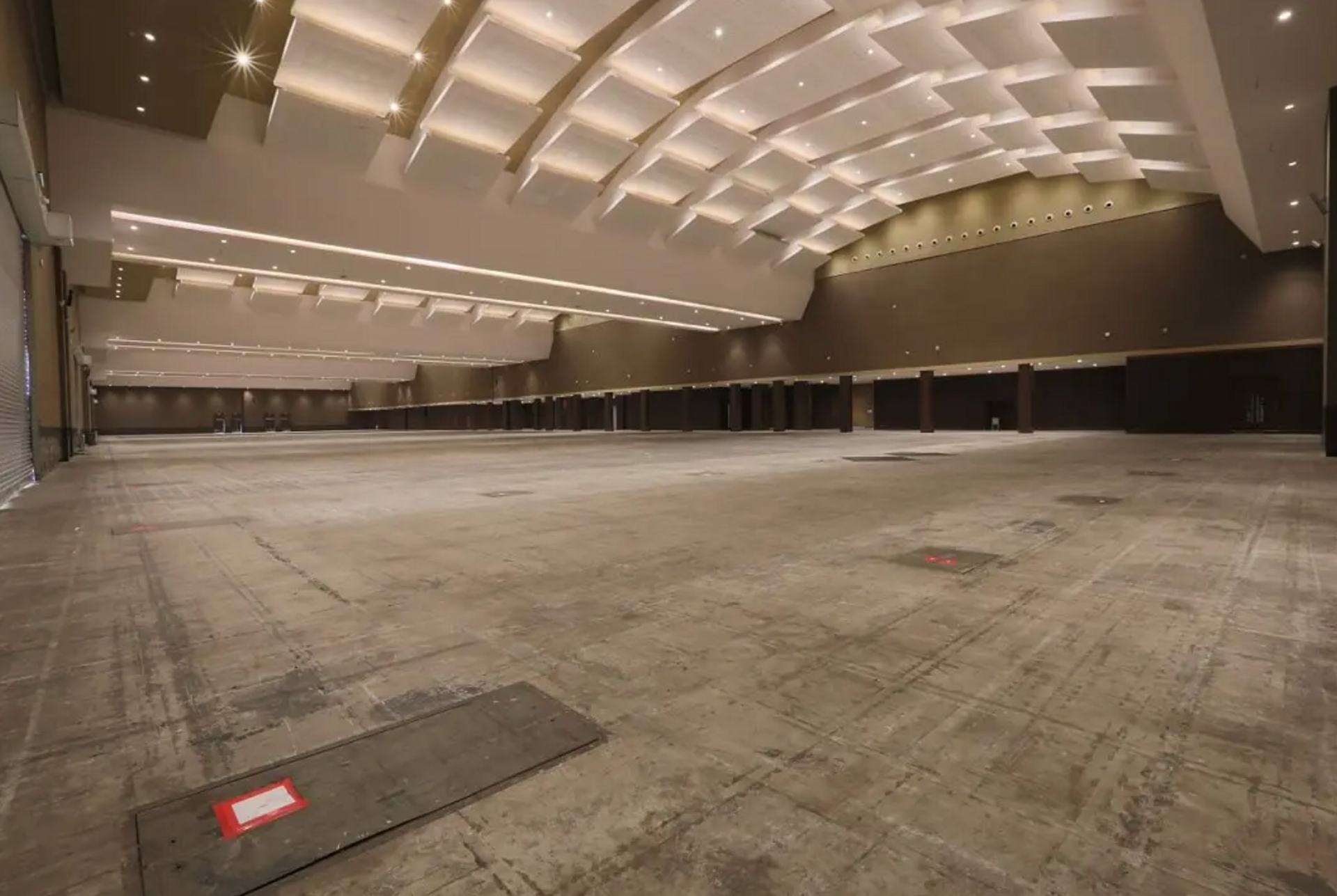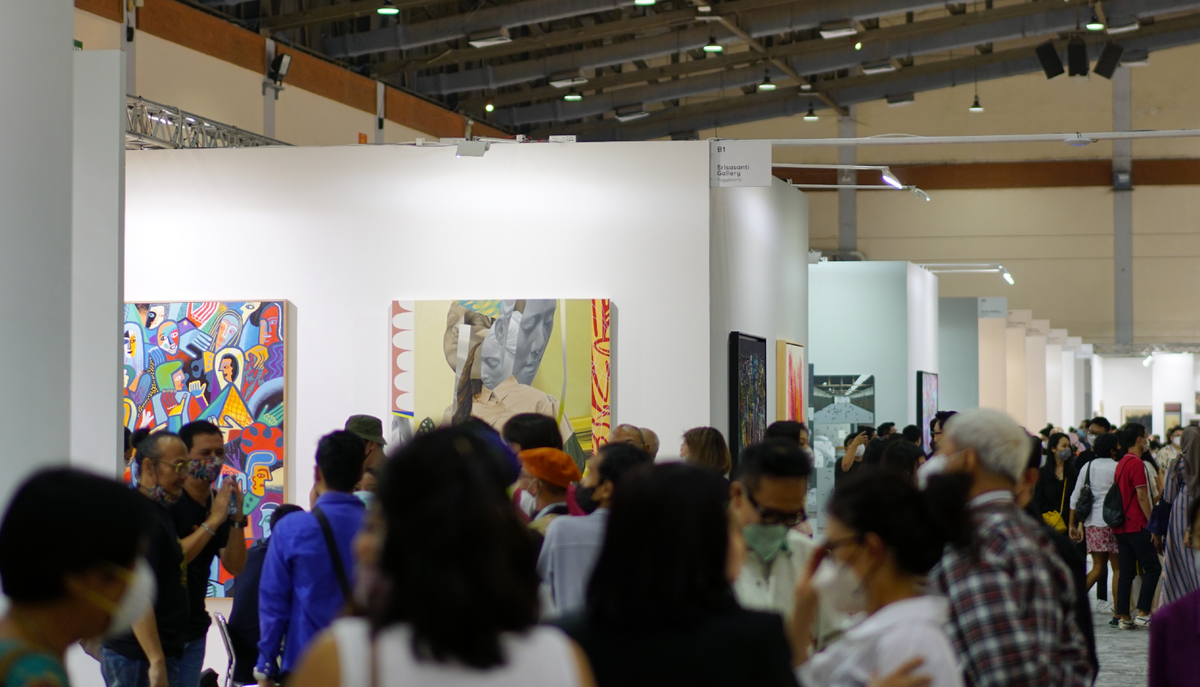Good crowds, if mixed sales, greeted the opening of Art Jakarta (17-19 November). This year the fair navigated a new venue and time slot ahead of Indonesia’s election year. “The response on the first day has been positive, and a diverse range of works has found appreciation among collectors,” says the fair's director Tom Tandio. A key fair for the region, Art Jakarta “anticipates continuous growth, contributing to the development of a more substantial art scene in Southeast Asia,” Tandio says.
“It is quite good, we have reserved six to ten works so far,” in a range of 5m to 1.2bn rupia, says Anastasia Astika, the project executive of Bale Project advisory. Based in Bandung, one of Java’s two major artists’ centres, the advisory has been attending Art Jakarta for seven years. “There are collectors we know, and new ones. Days two and three are usually more diverse, with people from other industries. "Last year was slow, and sales came more as follow up afterward. This year is too early to say."
The fair this year was bumped from its usual August spot, due the meeting this September in Jakarta of the Association of Southeast Asian Nations (ASEAN) Summit, with a prior renovation of usual Art Jakarta venue Jakarta Convention Centre. Rescheduling was only possible by moving from the more conveniently situated JCC to the Jakarta International Expo Kemayoran (JIExop) in the city’s historic northern area. Moving from August to November also pits Art Jakarta against the Taipei Biennale and right after the bustling Shanghai art week on the dense Asia art calendar. In 2024 the fair will remain at JIExpo and move to early October (4-6).

Art Jakarta's new venue, the Jakarta International Expo Kemayoran (JIExop)
Astika describes the new venue’s roughly 10,000 sq. m of space as more expansive, and allows the fair to include 68 galleries this year, of which 40 are Indonesia-based, compared to 62 in 2022. Art Jakarta was first established in 2009 as Bazaar Art Jakarta, and is the only large fair focusing on Southeast Asia.
“I feel the energy is about the same as other years,” says Thanh Huyèn, manager of Ho Chi Min City’s Vin Gallery, attending the fair since 2017. She describes the venue as “suiting industrial expos,” like a concurrent rubber fair elsewhere in the sprawling, fortress-like complex. Though opened in 2010, it utilises the site of a former airport built in 1940, with security barriers recalling times of regular civil unrest in the country.
The fair also this year debuted a five-person art verification and authenticity committee for every included work created before 1990. “In the evaluation, if three out of the five judges disagree, we kindly request the gallery not to showcase the artwork, ensuring a stringent approach to maintain the integrity of the exhibited pieces,” says Tandio.
“Everywhere we have been has not been as good as before Covid,” Thanh says. This was her seventh Asian fair this year, including Art Fair Philippines and Art Basel Hong Kong. "We don’t sell much locally, in Vietnam it is very hard to sell contemporary art, the interest is just in modern art." At Art Jakarta, Vin on day one sold two large paintings by Yohei Yama for $15,000 and a small painting by Dylan Gill for $2,500, to Chinese and Taiwanese collectors. With previous editions, the interest came more from Indonesian buyers, but she stressed that on the opening day collectors start with more familiar galleries. "Indonesia is much better than Vietnam! We have no choice, because of our society, but hope it might become like this someday."
Political messages were present but subdued, mostly taking the form of gentle social satire. Global tensions were barely touched upon at the leading fair of the world’s most populous majority Muslim nation, and not just because the collecting classes skew heavily towards the ethnic Chinese minority, who in Indonesia are predominantly Christian. Moods remain calm as President Joko Widowo’s decade in power is predicted to transition smoothly, regardless of which of the three top contenders succeeds him in February 2024. The primary controversy is over a court ruling, overseen by Widowo’s brother-in-law, allowing Widowo’s son, Gibran Rakabuming Raka, to run as vice president despite being under the age threshold. This year’s GDP growth of 4.8% is expected to continue at about 5% next year.
"It appears that the upcoming election has not significantly impacted the country's economy, and things seem quite normal," Tandio says. "Indonesia, even during the pandemic, showcased economic growth, positioning itself as a resilient nation." projections that the country could rise into the economic top ten within two decades due in part to its young population. “We can see many young people attending the first day of Art Jakarta 2023," Tandio says, and “increased participation from young individuals actively engaging in collecting art.”
Highly discussed but little-exhibited were artists from nearby Myanmar, where a de facto civil war continues in the aftermath of the 2021 military coup. A compelling booth by the Malaysian gallery A+ Works of Art challenges the erosion of democracy region-wide, primarily with works by Thai artists like Phornphop Sittiruk, who presented the Universal Declaration of Human Rights in gold font, clearly legible in English but obscured in Thai. The artist also recast rocks, placed on a crate declaring “The Future is Fragile”, from the rubble of Bangkok’s demolished Supreme Court, an icon of democracy when it was erected in 1939. Its widely-protested flattening in 2012 foreshadowed to many the 2014 military coup that has suspended popular rule through today.


